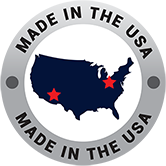Why Platinum Thermocouples Are the Gold Standard for High-Temperature Measurement
Platinum thermocouples are high-temperature sensors made from pure platinum and platinum-rhodium alloys. Known for their stability and corrosion resistance, they’re used in demanding industries like aerospace, glass, and semiconductor manufacturing.
The most common types include:
- Type S: Platinum vs. 10% Rhodium
- Type R: Platinum vs. 13% Rhodium
- Type B: 6% Rhodium vs. 30% Rhodium
Types S and R handle continuous use up to 2550°F (1398°C), while Type B reaches 3100°F (1704°C). All are part of the noble metal thermocouple family, trusted for accurate performance in extreme heat.
Platinum Thermocouple Wire: Built for Stability
At the core of every platinum thermocouple is precision-engineered platinum thermocouple wire. This wire delivers consistent, accurate voltage output even at extreme temperatures, thanks to platinum’s resistance to oxidation, drift, and corrosion.
CEL offers platinum thermocouple wire in a wide range of diameters—from ultra-fine 0.001″ up to 0.032″—to suit various industrial needs. Wire is available in matched pairs for maximum accuracy and can meet standard or special limits of error.
When operating near temperature limits, heavier gauge wire is recommended for durability and signal stability. CEL supports custom wire requests and provides platinum wire ready for integration into calibrated thermocouple assemblies.
Performance Under Pressure: Atmosphere & Application Considerations
Platinum thermocouples are trusted in extreme environments, but the operating atmosphere plays a critical role in long-term performance. These sensors perform best in:
- Oxidizing atmospheres – Ideal for open-air, furnace, and combustion processes
- Inert environments – Suitable for controlled chambers and gas-sealed systems using argon or nitrogen
- Vacuum environments – Type B offers the best stability for short-term vacuum use in semiconductor and crystal-growth applications
However, platinum and platinum rhodium thermocouples should not be exposed to reducing atmospheres or metallic vapors without proper protection. In these conditions, the sensor materials can degrade, impacting accuracy and lifespan.
To avoid contamination, non-metallic protection tubes are recommended, especially near the thermocouple tip.
CEL engineers can advise on the right protection setup based on your temperature range, atmosphere, and sensor type—ensuring long-term reliability for your specific process.
Built for Demanding Environments
CEL delivers platinum thermocouples and wire with the precision and durability required for high-temperature, high-performance industries. From matched-pair wire to ISO-accredited calibration and custom assemblies, we build thermocouples to meet your exact specs—and support you from selection to installation.



